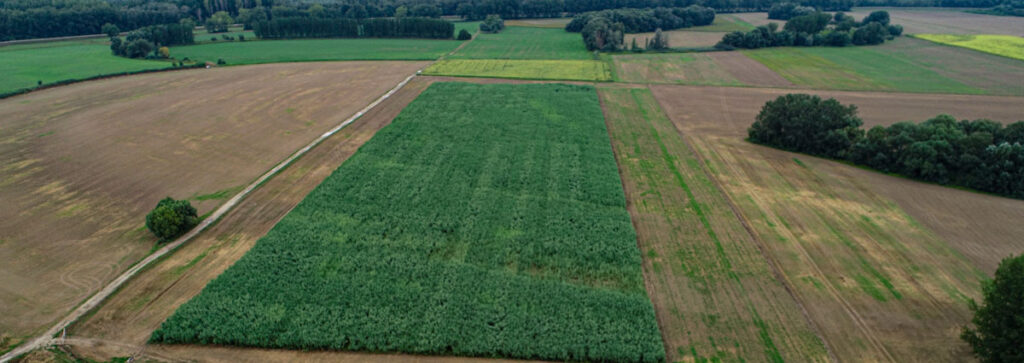Food should be used to feed people instead of being used as an input for energy production. About five percent of the U.S.’s energy used in 2020 came from biomass which includes food as an input.
As our nation has worked for years to include more biomass in energy production to avoid costly and dangerous fossil fuels, we begin to see a potential tussle on how to best use our lands for producing food, managing carbon, and generating energy. Hexas is stepping in to return marginal cropland into land that can produce nutritious food, and reduce our reliance on trees as a source of raw materials.
Quality farmland should be used for food production
The U.S. uses a lot of quality farmland to produce corn for both food and fuel. The issue Hexas is trying to ameliorate is that a lot of nutritious food output grown on quality farmland is also used for biofuel production in the form of ethanol. Instead of using corn, it would be more beneficial to use perennial grasses such as Xano Grass from marginal farmland as inputs for biofuels instead of crops.
Saving trees and making bad farmland productive again
Our overreliance on trees has led to deforestation, causing a number of issues such as climate change, desertification, soil erosion, flooding, and displacement of people, often indigenous. Additionally, marginal cropland is also a problem as it increases carbon emissions, soil erosion, and reduced nutrients.
Hexas’ solution
Hexas (recently accepted into Valley Ventures Cohort 6) may stem negative externalities from both deforestation and the use of marginal cropland with the successful deployment of its biomass solution. This would be accomplished by converting marginal farmlands into quality farmland in about five years while providing biomass to be used for a number of applications instead of trees. Hexas has developed not only a biomass solution but a production process that allows its biomass to be dropped into existing manufacturing processes where wood and food biomass inputs are currently used.
Xano Grass is billed as a ‘regenerative’ biomaterial, meaning useful biomass is continually and increasingly harvested from its very fast and ever-growing perennial grass crop. This perennial grass can be used for a large variety of drop-in solutions for widely used products that currently increase carbon in our atmosphere.
Instead, Xano Grass could provide carbon mitigating solutions to these and potentially other products:
- Fiberboard
- Energy pellets
- Biofuel
- Renewable natural gas/biogas
- Biochemicals
- Bioplastics
- Pulp and paper
- Bioremediation
- Bio-composite reinforcement
- Animal bedding
- Packaging
- Textiles
Carbon sequestration with a perennial grass
Hexas measures its impact on sustainability. In terms of carbon sequestration, the company’s grass, on average, sequesters 13.2 metric tons of carbon per acre per year, above and below ground. This is much more than no-till farming of corn that sequesters 0.3 metric tons of carbon per acre per year.
Other sustainability metrics resulting from this perennial grass are hard to measure, for example:
- Improving soil through nitrogen
- Preventing soil loss and erosion
- Increasing aeration for roots
- Determining the amount of reduced deforestation
Corporate interest
Hexas has generated interest from a number of industry players because the company provides a reliable and consistent supply of plant-based raw materials that are used in multiple applications in a conversion-ready, drop-in format. Currently, the company’s sales in Europe are validating its business model.
The headline on Hexas’ website reads:
Based in Olympia, WA, Hexas’ CEO Wendy Owens sells their Xano Grass™ ‘regenerative’ biomaterial inputs in Europe and is testing Xano Fiber’s efficacy in California with support from the Department of Energy (DOE).
Outcomes
Based on interest from a couple large, international furniture producers as well as the Department of Energy’s support of testing Hexas’ Xano Grass biomass for clean energy in California, there may be more options at our disposal to improve marginal farmlands, reduce deforestation, and meet our climate-mitigation efforts.
If Wendy Owens is able to successfully lead Hexas into the U.S. market with its Xano Grass, we may leave a lot more trees standing, use corn for food and not fuel, and keep fossil fuel in the ground.
About The Author

Jeff Macon is the venture development manager at Fresno State’s Water, Energy, and Technology (WET) Center where he supports the technology commercialization and business development of ventures providing solutions to Californians and communities beyond.

